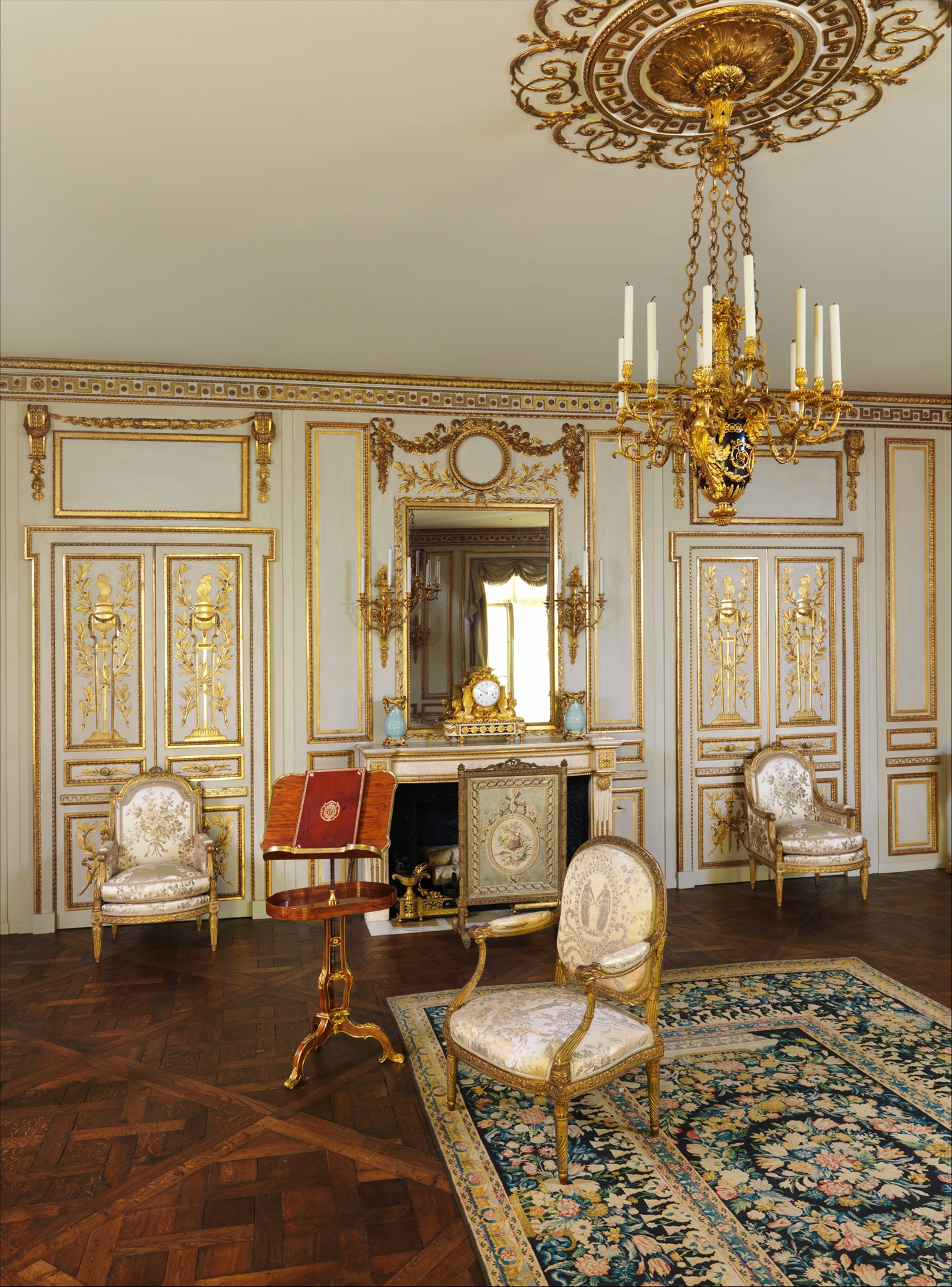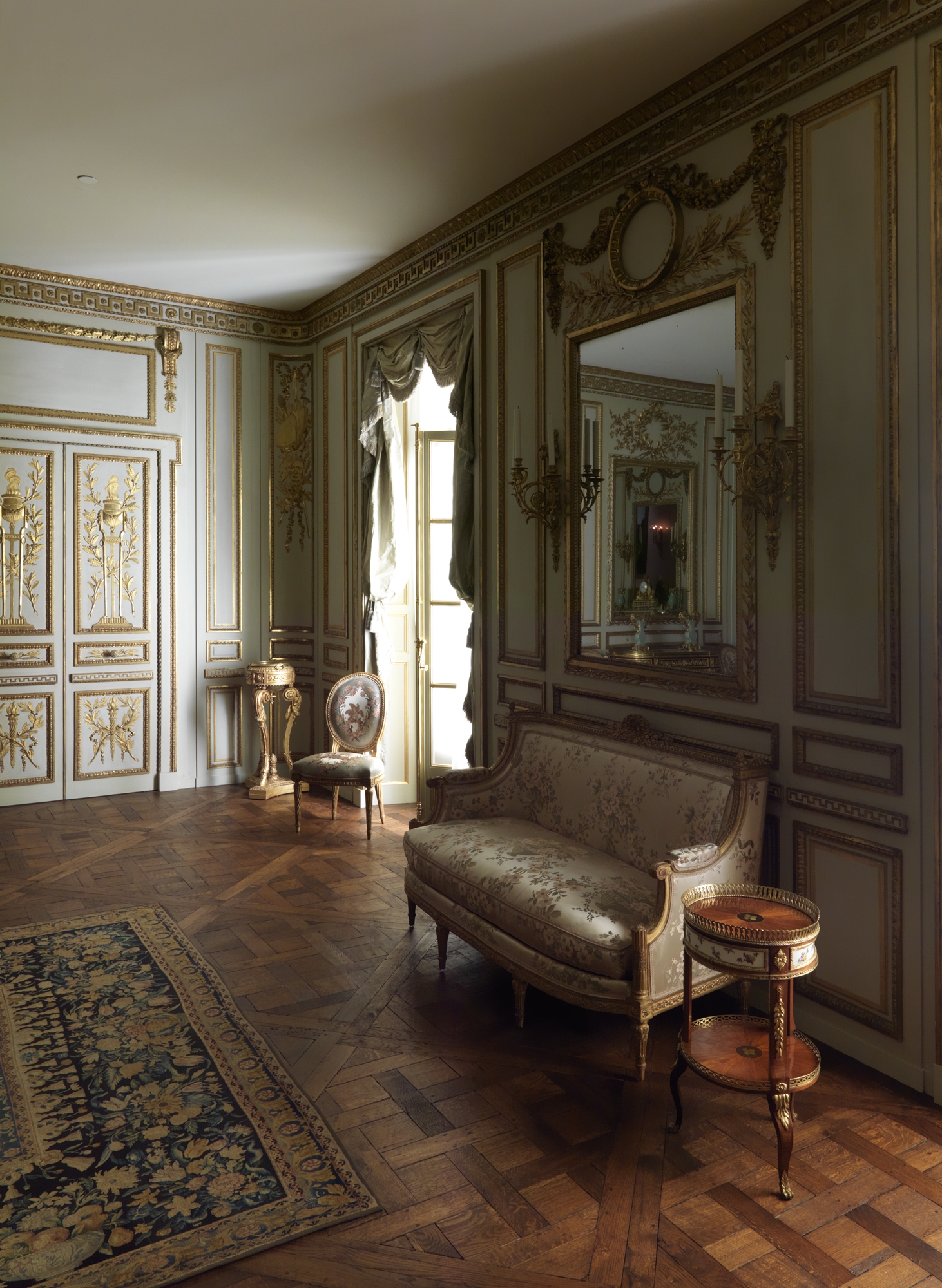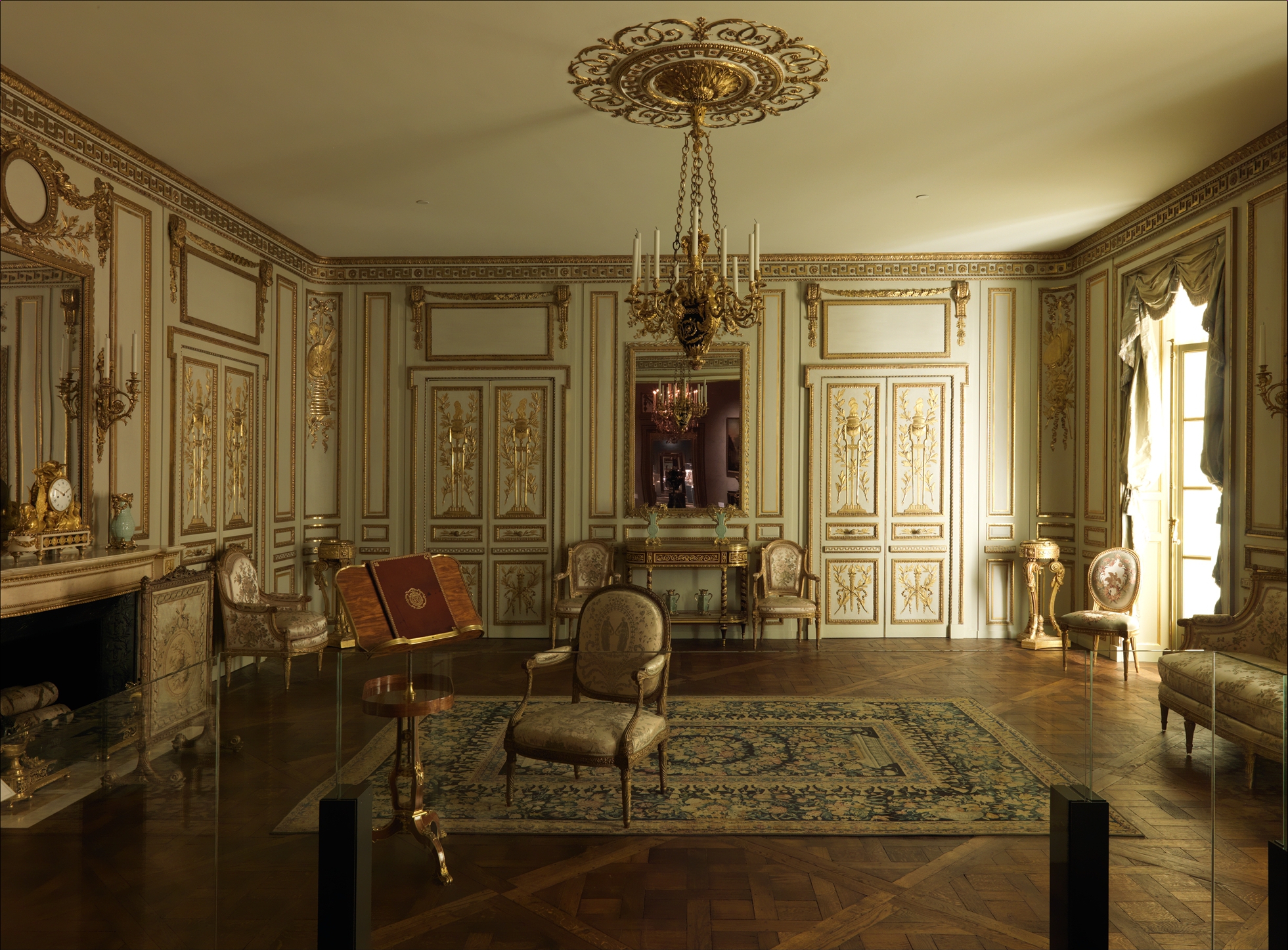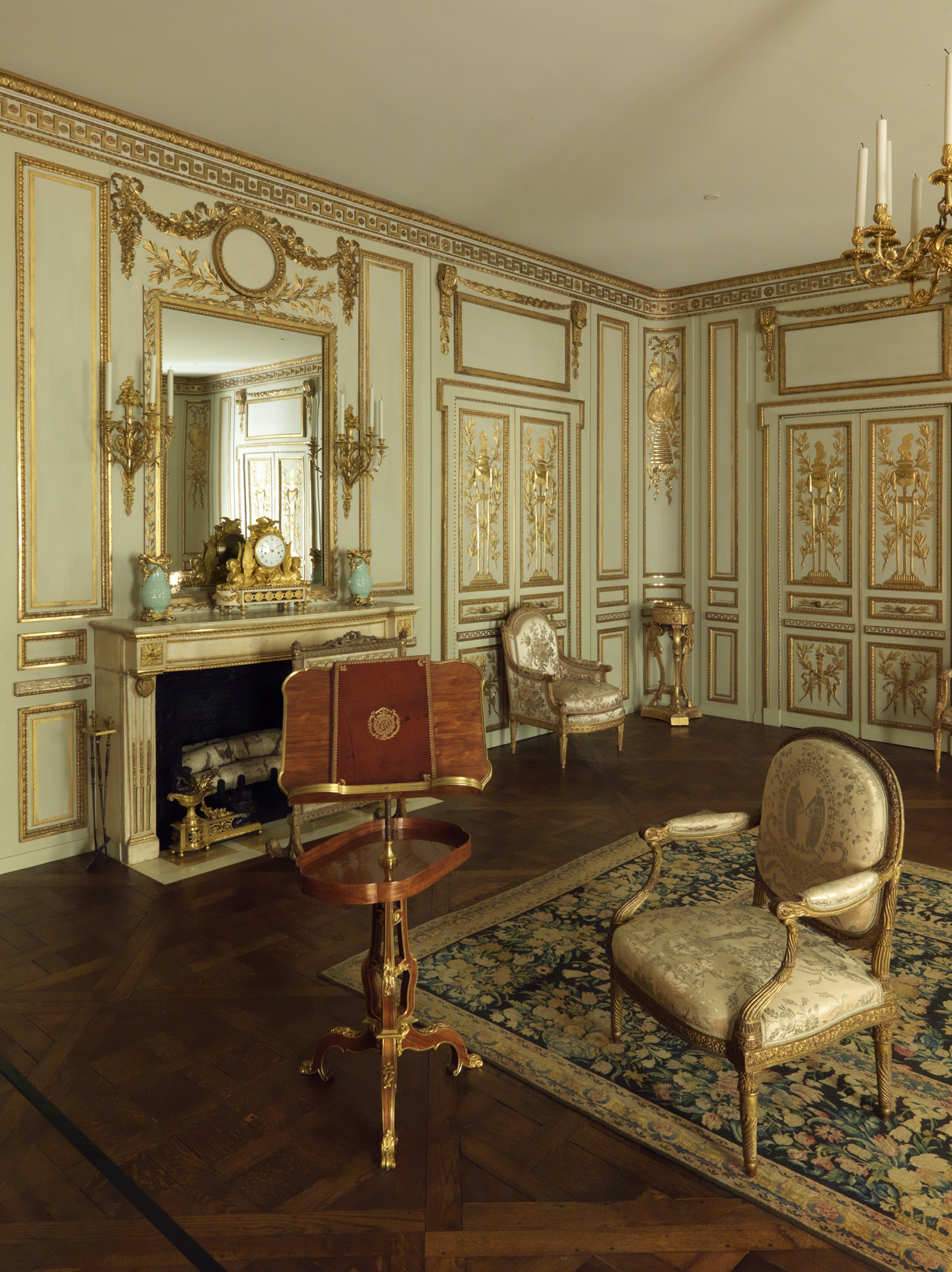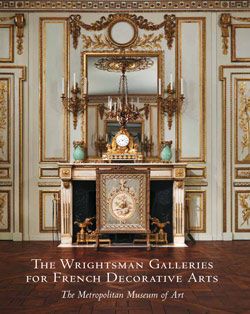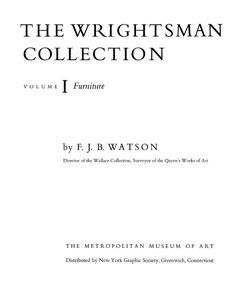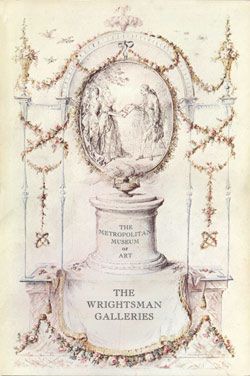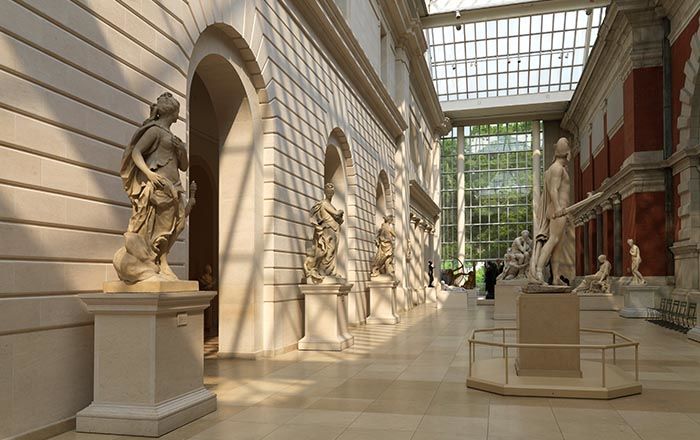Carpet (tapis)
Manufactory Savonnerie Manufactory
Until 1671 the manufactory known as Savonnerie occupied workshops not only at the Louvre but also at the site of a former soap factory at Chaillot—hence the name Savonnerie, from the French savon, or soap. Textiles created at both locations during the first half of the seventeenth century are generally known as Louis XIII carpets. They are small in size and display a wealth of floral ornament against a black ground. Despite their name, however, many of these exquisite rugs were actually woven early in the reign of Louis XIV, who nominally became king in 1643, a few months before his fifth birthday.
This well-preserved example in the Museum’s collection may originally have been intended as a table carpet. Almost serving as a carpet within a carpet, the central field has a border edged with trompe l’oeil tassels that seem to hang down on all sides when the rug is placed on a rectangular table the size of the field. Decorating the central panel is a floral wreath enclosing a large bouquet, flanked at either narrow end by a stone pedestal on which a basket of flowers is placed. The outer border is embellished with bowls, baskets, and vases filled with fruit and flowers that alternate with floral bouquets, echoing motifs seen in contemporary paintings. The bright colors used for the profusion of naturalistic flowers give the carpet a particularly fresh and lively appearance. Among them is the striped or flamed tulip; its bulb commanded high prices, resulting in a frenzy of speculation called tulipomania during the 1630s. The blue and white bowls reflect the fashion for Chinese porcelain, a prized commodity imported to Europe by ships of the East India Companies.
[Daniëlle Kisluk-Grosheide, 2010]
This image cannot be enlarged, viewed at full screen, or downloaded.
This artwork is meant to be viewed from right to left. Scroll left to view more.


